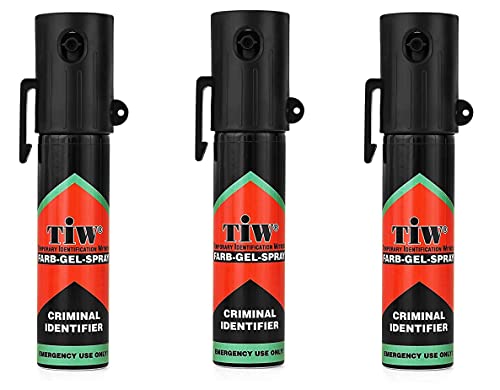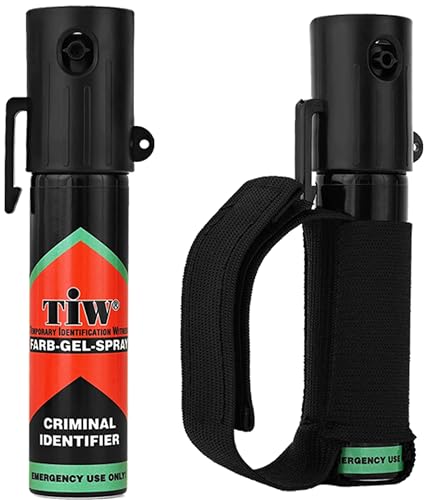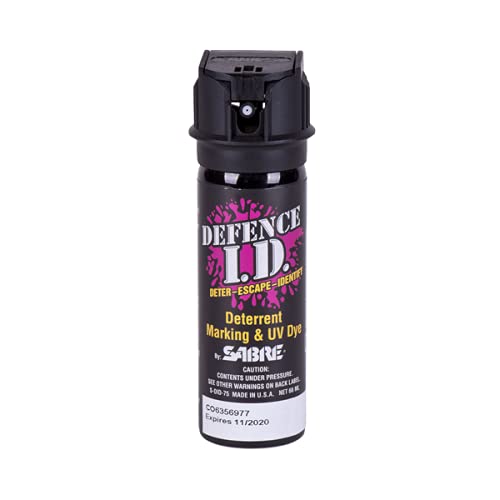
Understanding Pepper Spray Self-Defence
Pepper spray has become an essential tool for many people seeking a method of personal protection. It is a non-lethal self-defence product that can incapacitate an attacker, allowing the user to escape to safety. The spray contains a chemical compound derived from chilli peppers, which can cause temporary blindness, difficulty breathing, and severe irritation of the skin, making it an effective deterrent in critical situations.
Why You Should Buy Pepper Spray Self-Defence
Investing in pepper spray for self-defence can provide peace of mind in uncertain situations. Carrying it is a proactive measure, particularly for individuals who often find themselves in high-risk environments. The portability and ease of use make it a popular choice among individuals seeking to enhance their personal safety.
Feeling Safe with Pepper Spray Self-Defence
When you buy pepper spray for self-defence, you are not just purchasing a product; you are investing in your safety and adding an element of security to your daily life. Knowing that you have the means to protect yourself can significantly reduce anxiety and fear when moving through various environments, particularly at night or in secluded areas. Overall, pepper spray is a practical choice for self-defence enthusiasts and those who desire an added layer of protection as they navigate their lives.
Understanding Pepper Spray: How It Works
Pepper spray is a widely recognized self-defense tool, composed primarily of capsaicin, an active component derived from chili peppers.
When used, it effectively targets the assailant’s eyes, skin, and respiratory system, resulting in immediate and temporary incapacitation.
The mechanism of action begins with the spray impacting the eyes, causing intense irritation, swelling, and temporary blindness.
This reaction occurs due to the inflammatory properties of capsaicin, stimulating pain receptors and provoking a burning sensation that can last from 15 to 45 minutes, offering the victim crucial time to escape.
In addition to its ocular effects, pepper spray can also affect the skin. Upon contact, it may induce a painful burning sensation and redness, which can deter an assailant from continuing their aggressive behaviour.
Moreover, inhalation of the spray can lead to coughing, difficulty breathing, and a general sense of panic. The respiratory effects are particularly significant, as they can momentarily incapacitate an attacker, giving the victim the opportunity to evade a dangerous situation.
There are various types of pepper sprays available, differing mainly in their active ingredients and concentration levels. The most common formulation utilizes oleoresin capsicum (OC), which typically ranges from 1% to 10% concentration.
Some formulations might include additional components, such as UV dye for identification purposes or tear gas agents for enhanced effectiveness.
Users should be aware that the higher the concentration, the more potent the spray. Familiarity with these qualities is essential for selecting an appropriate pepper spray for self-defence situations.
It is equally important to understand the limitations of pepper spray; factors such as wind direction, distance, and target accuracy can impact its effectiveness. Ultimately, knowing how pepper spray works enhances its utility in self-defence scenarios, ultimately contributing to personal safety.
Choosing the Right Pepper Spray for Your Needs
When it comes to personal safety, selecting the appropriate pepper spray self-defence product is essential.
Several factors should be taken into consideration to ensure that the chosen spray meets individual needs and complies with local regulations.
One of the first aspects to evaluate is the size of the pepper spray canister. Smaller models may be more convenient for everyday carry, often fitting into a pocket or purse easily, while larger canisters may offer a higher volume of spray for extended use in emergency situations.
Next, the spray pattern is crucial in determining effectiveness. Different types, such as stream, fog, or gel, have varying ranges and dispersal techniques.
Stream sprays can reach a greater distance with pinpoint accuracy, making them ideal for focused self-defence scenarios. Fog sprays create a wider coverage area, suitable for dealing with multiple attackers or creating a barrier, while gels tend to be less affected by wind, minimizing the risk of self-contamination.
The range of the pepper spray is another vital consideration, with effective sprays typically reaching distances of 8 to 12 feet.
This distance allows users to maintain a safer space from the assailant while utilizing the spray effectively. Additionally, checking the expiration date is crucial; expired pepper spray may lose potency and be ineffective in a critical moment.
It is essential to purchase pepper spray self-defence products that adhere to local laws and regulations, as some jurisdictions impose restrictions on the strength of the spray or the size of the canister.
Ultimately, assessing personal safety needs, lifestyle factors, and potential emergency situations will help individuals select the most suitable pepper spray, ensuring preparedness and confidence in self-defence scenarios.
Effective Techniques for Deploying Pepper Spray
Pepper spray self-defence can be an invaluable tool for personal protection when used correctly. Understanding the proper techniques for deploying this defensive spray is crucial for its effectiveness. First and foremost, users should familiarize themselves with the grip of the canister.
A firm but relaxed grip is ideal, allowing for quick access while maintaining control. Typically, it is best to hold the spray with the thumb on the bottom and the index and middle fingers on the side, which provides stability when aiming.
When it comes to aiming, it is essential to remember that proper target practice can significantly improve efficacy. The best target area is the face of the assailant, particularly the eyes, which are most sensitive and will cause immediate disorientation.
To achieve this focus, ensure the canister is aimed at the upper body area, adjust it as necessary, and consider the wind direction and distance between you and the potential threat.
Optimal distance plays a vital role in the successful use of pepper spray. Most canisters spray accurately at a distance of 8 to 12 feet, allowing users to maintain a safe separation from the threat.
It is advisable to practice spraying at various distances to increase comfort and accuracy. Additionally, situational awareness remains critical; remain vigilant about your surroundings to identify potential threats and prepare for defensive actions before an incident occurs.
Training scenarios can also be beneficial, allowing users to simulate real-life situations where pepper spray self-defence may be necessary.
Engaging in mock scenarios with friends or using targets can boost confidence and aid in becoming accustomed to both the physical act of spraying and the psychological aspect of self-defence. By mastering these techniques, individuals can empower themselves to respond effectively in critical situations.
After the Incident: What to Do and Legal Considerations
Using pepper spray for self-defence can be a critical action in a threatening situation. However, once the incident has occurred, it is essential to take several immediate steps to protect yourself and navigate any legal considerations.
Firstly, ensure your immediate safety. After deploying pepper spray, it is wise to distance yourself from the area of confrontation. This reduces the risk of further conflict and allows you to assess your surroundings for any potential threats.
If the situation has resulted in injuries, whether to yourself or the assailant, seeking medical help should be a priority.
Even if you believe the injuries are minor, it is advisable to get checked by a medical professional. Additionally, document any injuries or evidence from the scene, as this information can be crucial in any legal proceedings that may arise.
Subsequently, contacting the authorities is a critical step. Report the incident as soon as it is safe to do so, providing detailed information about the encounter and the use of your pepper spray self-defence tool.
Transparency with law enforcement can stem any misconceptions about your actions, as using pepper spray is often legally considered an act of defence.
Furthermore, understanding the legal ramifications of using pepper spray is vital. Different jurisdictions have varying laws regarding self-defence, and it’s essential to familiarize yourself with the specific regulations that apply in your area.
The concept of reasonable force is particularly important; you must demonstrate that your actions were appropriate given the circumstances.
By being informed about the legal standards and responses required after deploying pepper spray, one can navigate the aftermath with greater assurance.
Taking these steps not only protects your wellbeing but also helps mitigate potential legal risks associated with employing pepper spray in self-defence. Ultimately, preparedness and knowledge are key in ensuring that you can confidently manage any repercussions following an incident.
Feel free to comment on this Pepper Spray Self-Defence, do you have one? Have You Ever used it? Let Us know…





























